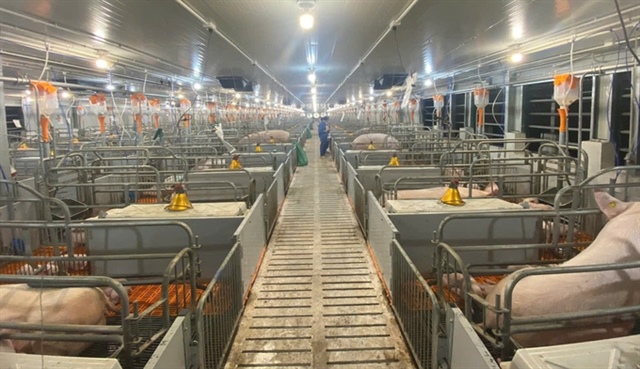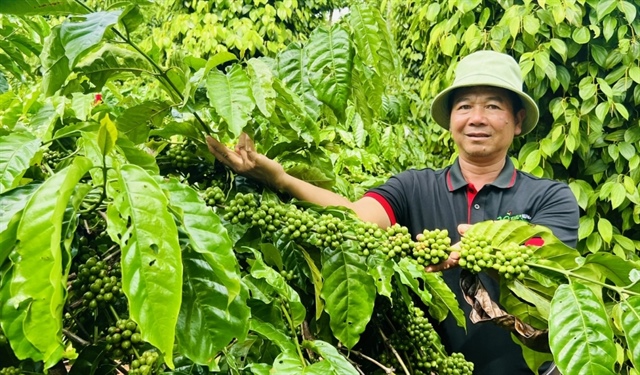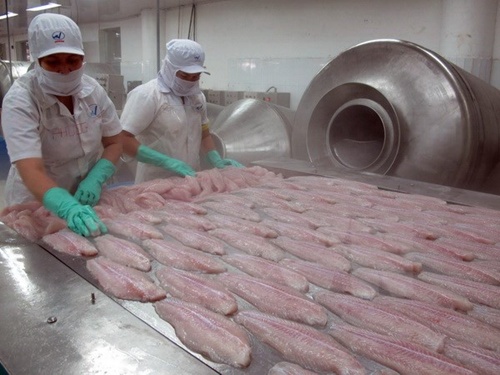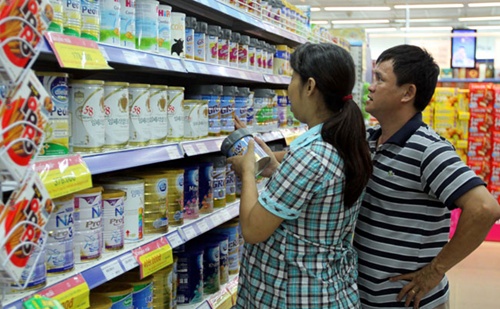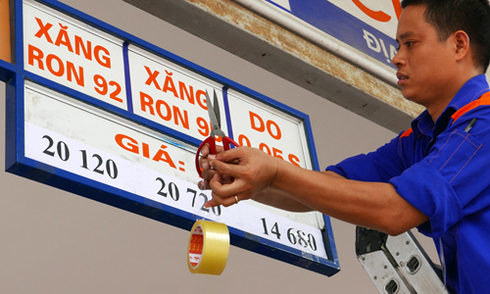Sweet success for Vietnamese lychees
Sweet success for Vietnamese lychees
After years of facing seemingly impenetrable barriers, Vietnamese lychees are now being exported to the US and Australia.
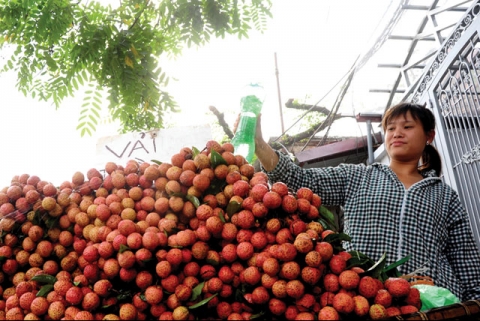
Every year, in June and July, anyone visiting Luc Ngan district in Bac Giang province will see its streets bursting with the red of ripe lychees. This year Luc Ngan saw a rich harvest, with its growers happier than in previous seasons because their lychees are now officially allowed to be exported to the US and Australia after many years of negotiations and quality tests. Not only Luc Ngan but also famed Thanh Ha lychees, from Hai Duong province, are to be exported to the two markets. Farmers are happy and the government is excited because after so much effort Vietnamese lychees have finally reached the quality standard for export to the markets, which are considered to among the largest and most fastidious in the world.
From June 12 to 19, 12 tons of lychees from the Red Dragon Company arrived in the Australian city of Melbourne, while one ton from the Thien Anh Minh Company and 3.5 tons from the Anh Sao Duong Company found their way to Sydney. After 12 years of negotiations it’s expected that Australian importers will sign larger contracts and greater opportunities will open up for Vietnamese lychees in the country.
Meanwhile, on May 30 over 2.1 tons of lychees were taken straight from Noi Bai International Airport to Ho Chi Minh City for irradiation and quality quarantine before being exported to the US. According to exporters, although the US now receives two types of lychees - from China and Mexico - the Vietnamese variety is appreciated for its appealing taste. Experts believe that the pioneers in exporting lychees to the US and Australia need to present clean agricultural brands in the tough markets, which will drive the development of sustainable agriculture exports.
Positive signs
Exports are on the rise, in traditional markets such as China, Laos, Cambodia, Thailand, Singapore and Europe, as well as tough markets like Japan and South Korea. China still remains the largest importer, accounting for 60 per cent of total export volumes.
Ms. Nguyen Thi Hoang Thuy, Trade Representative of Vietnam in Australia, expressed her pleasure at Vietnamese lychee being officially exported to the country. She believes the exports are extremely important because Australia has strict quarantine regulations. “Once we successfully negotiated lychee exports the door for other fruit exports to Australia became wide open,” she was quoted as saying.
While most companies agree that exporting lychees to foreign markets, especially the US and Australia, is anything but easy due to competition with other countries, Ms. Nguyen Thi Man, Director of the Thanh Ha Agricultural Product Processing and Export Co. in Hai Duong province, who has seven years experience in lychee exports, believes Vietnamese lychee holds advantages in the US because it is sweeter and more aromatic. “Mexico’s have a lighter taste, with 13 per cent sugar, while Vietnam’s has 19 to 20 per cent sugar,” she said. With many years of experience with South Korean partners, she also emphad that foreigners often attach great importance to reputation. Vietnamese enterprises wanting to promote exports to foreign countries, therefore, need to retain their credibility.
With positive signs from foreign export markets, lychee growers this year no longer have to worry about reaping bumper crops then experiencing lower prices, as has been the case in the past. Ms. Nguyen Thi Dung, a lychee grower in Luc Ngan, said that this season her family harvested about half of a ton of lychee grown under export standards. Exporters paid VND15,000 ($0.69) to VND20,000 ($0.93) per kilogram, which is higher than the price in the domestic market, and her family saw better earnings this year. It’s clear to see that the positive signs for lychees going to the US and Australia as well as plans to continue the export of apples, dragon fruit, rambutan, and mango to difficult markets like the US, Japan, Australia, and New Zealand presents a good opportunity for Vietnamese fruit to conquer global markets.
Difficulties ahead
Despite the positive signs, the export of lychee into the two new markets is still believed to face many difficulties. According to Deputy Minister of Industry and Trade Tran Tuan Anh, the first lychee shipments to the US and Australia are just an initial step. “We can’t expect too much because these shipments are just a test run,” he said. “This year lychee growers must still depend on domestic consumption and the Chinese market.” He also indicated that in strict and fastidious markets it takes at least five to eight years or even longer for fruit to penetrate successfully. Vietnamese lychee took 12 years to be accepted in Australia. “Therefore, we shouldn’t hope that in the next one or two years Vietnam will have a large share of the lychee market in the US, Australia, or Europe,” he said.
Meanwhile, a lack of information on foreign market continues to create difficulties for Vietnamese exporters, Ms. Man said. Enterprises wanting to promote their exports must conduct research to understand the market and their partners. “The role of commercial counselors is particularly important, and product quality needs to be the top priority,” she added. The Export and Import Department under the Ministry of Industry and Trade, in its report on fruit and vegetable exports in May, noted that the ability of exporters to follow export processes remains weak, especially in negotiating, transporting, and handling. Because of these weaknesses domestic enterprises are still to secure major contracts, according to the report.
The building of a reputation for quality and improved storage of fruit are now more necessary than ever. The lessons from Vietnam’s dragonfruit exports to Japan must be learned. After the first shipment, a Japanese consumer found a worm in a dragonfruit she purchased and the fruit was immediately banned and it took ten more years before exports resumed. The journey the Vietnamese lychee has taken, with its many years of trouble with recurring instances of bumper crops and low prices, brought it to the most difficult markets in the world but also the ones with the most potential. Exporters need to be reminded yet again about the value of establishing a reputation for constant quality in production, processing and preservation.
Deputy Minister of Industry and Trade Tran Tuan Anh: “MoIT recognizes that boosting the provision of information to businesses is very important. It therefore requested its E-commerce and Information Technology Department cooperate with the Export and Import Department to build a comprehensive information system for businesses, to support them in their agricultural exports. Enterprises will receive regular information on foreign markets to meet the demands of their partners.”
Ms. Tran Thi Phuong Lan, Deputy Director of the Hanoi Department of Industry and Trade: “From production to circulation there are difficulties, so the department will create links between agricultural regions and between farmers and enterprises, to help them improve their operations and ensure that the quality of their fruit is always high before they are exported.”


